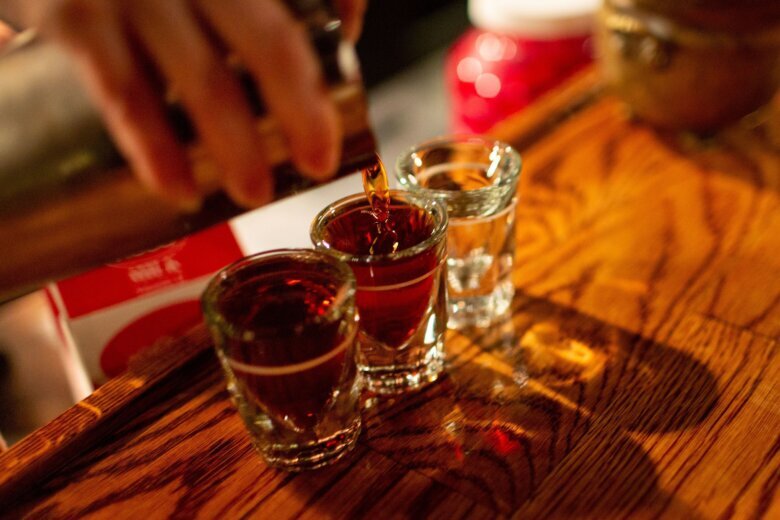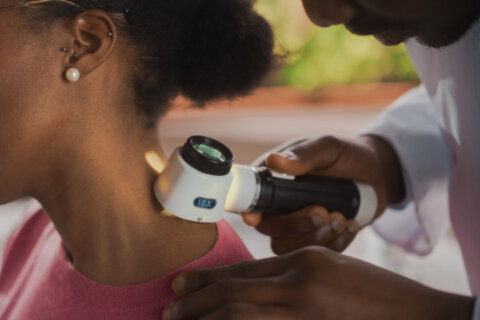
(CNN) — It’s a misnomer that heavy drinkers can “hold their liquor,” a new study found.
Instead, people with alcohol use disorder — what used to be called alcoholism — were significantly impaired on cognitive and motor tests up to three hours after downing an alcoholic drink designed to mimic their typical habits.
“It seems to be a popular perception that experienced drinkers can handle their liquor — like two cowboys in a bar in a drinking competition, and they have some macho strength to take in so much alcohol and handle it,” said study coauthor Nathan Didier, a research analyst at the Clinical Addictions Research Laboratory at the University of Chicago.
The idea that a person can become tolerant of alcohol at higher exposures is “everywhere, all over social media, movies, you name it,” said senior study author Andrea King, a professor of psychiatry and behavioral neuroscience at the University of Chicago.
“Our study found some degree of support for an increase of tolerance,” said King, who specializes in alcohol rehabilitation research, “but it really depends on how much alcohol is consumed, how rapidly and how much time has elapsed since the drinking.”
This finding is significant, King said, since “only about 10% of people with alcohol use disorder go into treatment and binge drinking is on the rise — which is consuming five or more drinks for a man or four or more for a woman within the first two hours of drinking.”
Some go beyond basic binging, engaging in what’s called “high-intensity drinking.” According to the National Institute on Alcohol Abuse and Alcoholism, this pattern of drinking is defined as consuming alcohol at twice the levels of binge drinking.
“This dangerous drinking pattern means 8 or more drinks for women and 10 or more drinks for men on one occasion,” the institute noted on its website.
Various types of drinkers
The study published Sunday in the journal Alcohol: Clinical and Experimental Research. It analyzed three types of young adult drinkers, most in their 20s, who were part of the Chicago Social Drinking Project, an ongoing research study started by King in 2004. The 397 participants included light drinkers, heavy social drinkers and those who had alcohol abuse disorder.
Light drinkers were defined as people who drink up to six “standard” drinks a week but do not binge, King said. In the United States, a standard drink is about 0.6 fluid ounces or 14 grams of pure alcohol, which differs depending on the type of adult beverage you consume.
Moderate drinkers were not added to the study, King said, to draw a clear comparison between the impact of light and heavy alcohol consumption: “People might overlap, and we didn’t want to confuse the distinction,” she said.
The second group in the study were heavy social drinkers, defined as those who drank 10 drinks a week at a minimum and binged alcohol one to five times a month.
The third group included drinkers who met the criteria for alcohol use disorder — 28 or more drinks per week for men and 21 for women — and who frequently binged at least one-third or more days in a month.
“In their daily lives, this group averaged 38.7 drinks a week, compared to 2.5 drinks a week for light drinkers and about 20 drinks for heavy drinkers,” King said.
People in this group also had to meet other criteria for alcohol use disorder, such as not being able to cut down on use, drinking even when it caused trouble with family and friends, and getting into situations where they or others could get hurt.
A single drink equaled up to 5 drinks
People in all three groups were tested at two different times: once with alcohol, another with a placebo designed to mimic the alcohol. But each time the study participants were told they might receive a stimulant, a depressant, alcohol or a placebo.
The intoxicating beverage was a flavored mixed drink with 190-proof grain alcohol, measured by body weight to equalize the effect of the liquor across body types. Women, who metabolize alcohol differently than men and can become more easily intoxicated, received a dose that was 85% of that given to men.
“The alcohol level of the drink was equivalent to four to five drinks that produce Breathalyzer readings of 0.08-0.09%, which is the threshold for (drunken) driving,” Didier said.
Before drinking and at various intervals after downing the beverage, alcohol levels were tested. At 30- and 180-minute intervals, participants were asked how impaired they felt on a scale of “not at all” to “extremely.”
Participants also completed two cognitive performance tasks before drinking and at each half-hour interval: One was a fine motor task in which study participants were scored on how quickly they could put pegs into holes; the other was a pencil-and-paper task designed to test cognitive skills.
Some tolerance was seen
At first, the study supported the notion that heavy drinkers can manage larger doses without impairment. At 30 minutes, both the heavy drinkers and those with alcohol use disorder had no problems with the cognitive test, while lighter drinkers felt sedated and fatigued, King said. Neither the heavy drinkers nor those with alcohol abuse disorder felt impaired when asked.
However, both of those groups did equally as badly on the task of putting pegs in holes, especially at the 30-minute mark. “We noted that at 30 minutes after consuming alcohol, all the groups were equally impaired,” Didler said.
Even though the alcoholic drink used in the study was enough to put all participants over the legal limit, people with alcohol use disorder will drink much more heavily and more quickly, King said.
To see if those with the disorder would be impaired at higher levels of alcohol that more closely mimicked their typical intake, researchers gave 60 participants who had alcohol use disorder another drink. This drink contained a level of 190-proof alcohol that was the equivalent of seven to eight standard drinks.
At the higher dose, people with alcohol use disorder had 50% more mental and motor impairment than they had after taking the lower dose, the study found. In addition, they did not get completely back to their baseline level of performance after three hours.
“What this study does is put a spotlight on the limitations of tolerance,” Didier said. “Even if you have a lot of experience drinking, that doesn’t mean that you’re not impaired — that’s an important takeaway.”
The-CNN-Wire
™ & © 2023 Cable News Network, Inc., a Warner Bros. Discovery Company. All rights reserved.








